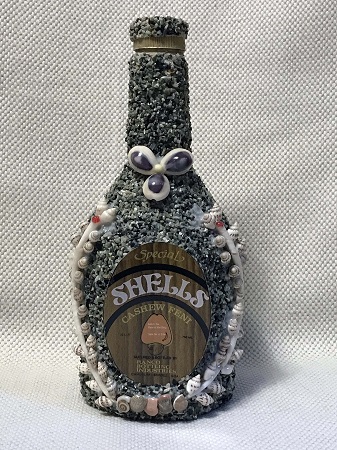Trade in wild animal and plant species poses a major threat to the survival of the species
CITES regulates international trade in endangered species of wild fauna and flora. The purpose of the convention is to protect species that are endangered because of trade from extinction.
CITES was signed in Washington in 1973 and entered into force two years later. Estonia acceded to the convention in 1992. By 2022, 184 countries have acceded to the agreement [1].

Illegal trade in endangered species is widespread and threatens the survival of many species. Trade in specimens of wild animal and plant species or objects made from them is the second largest threat to the survival of species after habitat destruction. Therefore, the fight against it is extremely important for the conservation of biodiversity, all the more so as rare plant and animal species have risen on the list of objects traded illegally in the world to be alongside drugs, weapons, and victims of trafficking in human beings.
In fact, anyone can come into contact with the subjects of CITES on a daily basis – it includes furs, cosmetics, folk medicine, pets, plants, food (e.g. roe, shark fins), etc. [2].
CITES covers more than 30,000 species. All transactions are prohibited with some species, while some may be bought and sold with permission [3].
Species protected under CITES are divided into appendices. CITES has 3 appendices (I, II, III). In the European Union, CITES is implemented on the basis of an EU regulation with 4 annexes (A, B, C, D):
- Annex A lists all species in Annex I to CITES, i.e. endangered species that are directly or indirectly threatened by trade. The import and export of specimens of such species is permitted only under exceptional conditions and is subject to very strict rules. Their transport for commercial purposes is completely prohibited. In addition, Annex A contains species that are in demand in European or international trade and are in danger of extinction if trade continues. The Estonian species on that list include all our large carnivores and birds of prey, the Atlantic sturgeon, and the European otter.
- Annex B lists the species in Annex II to CITES (those not already listed in Annex A), i.e. species that may not yet be in danger of extinction, but which may be threatened by uncontrolled trade. Trade in specimens of species listed in Annex B is permitted, but regulated, and special permits are required for import or export. These include, for example, the Estonian species of the common crane, the European medicinal leech, and orchids.
- Annex C lists the species in Annex III to CITES (not already listed in Annexes A and B) that can be identified by each country party to the convention.
- Annex D lists species not listed in Annexes A to C that are imported into the EU in quantities that justify their monitoring
If you are not sure what is being sold to you, it is always better to ask. Make sure that the product you buy specifies which species it is. Annex A species must have a CITES certificate that allows such a product to be sold. In other cases, the seller must be able to prove legal origin. CITES species may be brought to Estonia only via designated border crossing points. Certain items imported for personal use do not have to be authorised. A list of such exceptions is available on the website of the Tax and Customs Board. Each country must also control CITES trade domestically (e.g. the origin of caviar and exotic pets is checked in shops). However, each country has slightly different rules.
A contact point has been designated in each country to advise people on trade in animal and plant species [4]. In Estonia, the Ministry of the Environment is responsible for the CITES-related obligations, including advising citizens.
There is also a CITES scientific committee in Estonia. In addition to the committee, the Tallinn Botanic Garden, the Tallinn Zoo, the University of Tartu Natural History Museum, and the Estonian Museum of Natural History also function as CITES research units in Estonia.
You can read about the compliance with the requirements of CITES in Estonia in 2010–2020 in the publication ‘Eesti looduse kaitse aastal 2020’ (Estonian Nature Conservation in 2020, pp. 124–126).
Last modified: 29.06.2022
______________________
[1] https://cites.org/eng/disc/parties/chronolo.php
[2] https://www.envir.ee/et/cites